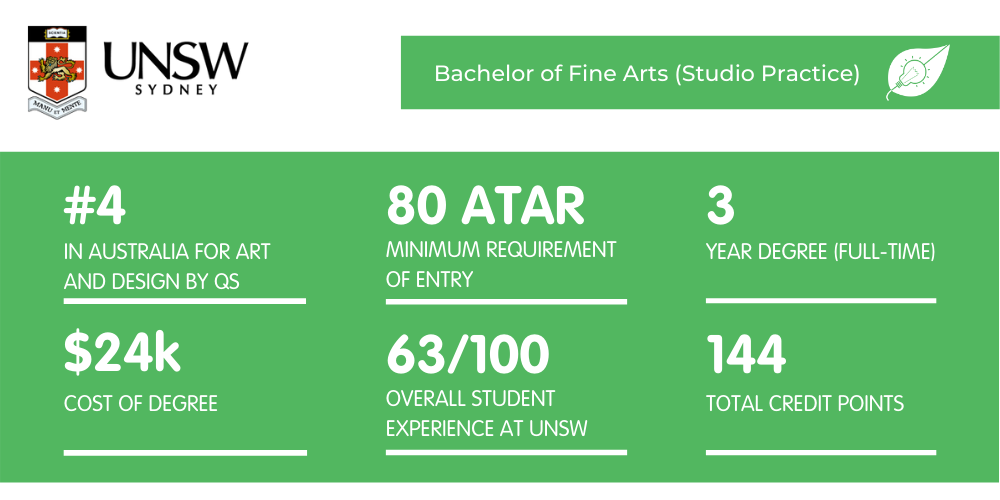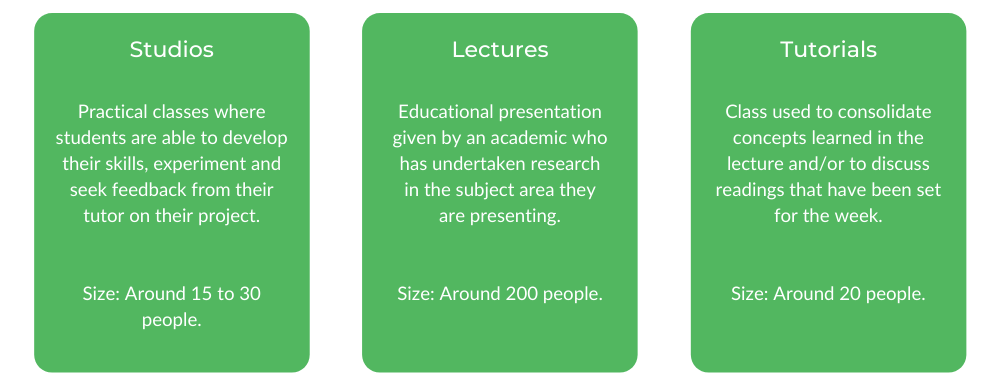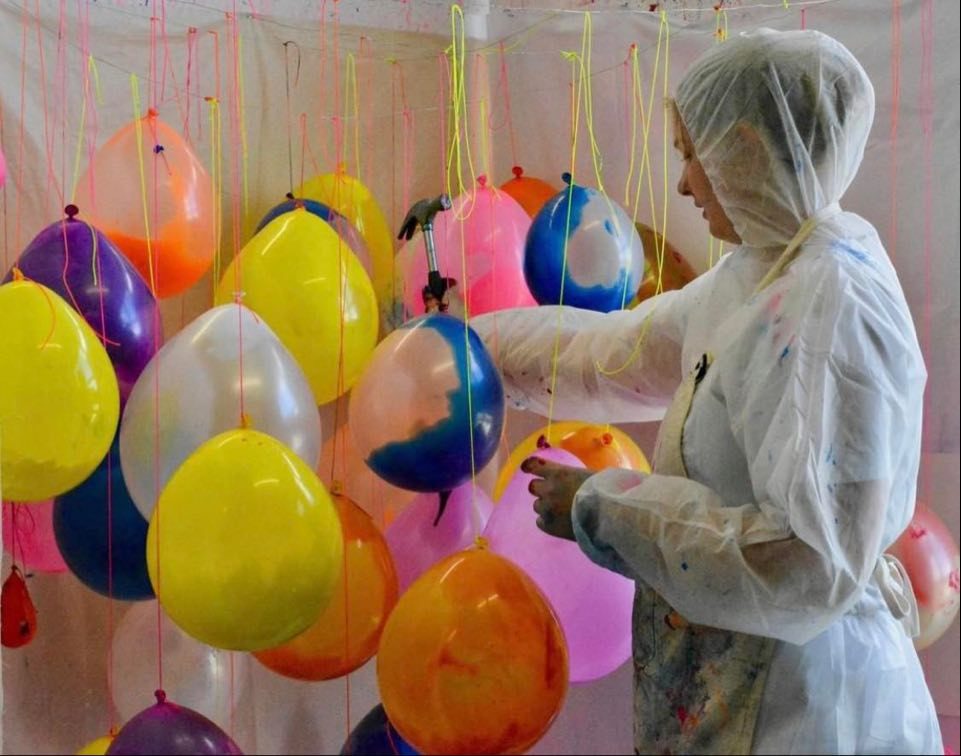
Are you naturally a creative person? Do you have a keen eye for aesthetic and form? If so, studying a Bachelor of Fine Arts (Studio Practice) at UNSW could be the right degree for you!
In this article, you’ll find everything you need to know about this degree from the core units, career paths to the university culture.
So, let’s dive in!
What is a Bachelor of Fine Arts (Studio Practice) at UNSW?
Core Units and Specialisations
How to Get into a Bachelor of Fine Arts at UNSW
What’s the Teaching Format?
What’s the Faculty and Culture Like?
What is a Bachelor of Fine Arts (Studio Practice) at UNSW?
A Bachelor of Fine Arts (Studio Practice) at UNSW is a course that allows students to explore different mediums and experiment with artistic techniques, all under a theoretical foundation of contemporary art history.
As opposed to a Bachelor of Fine Arts (Art Theory), the Studio Practice major is a practical-focused degree where artists are encouraged to explore their ideas, curiosities and passions in a creative way. After the second year of the course, students work in at least two specialisations of their choice and deepen their artistic range during studio sessions.
Can this degree be studied in conjunction with another or completed as Honours?
A Bachelor of Fine Arts (Studio Practice) at UNSW does not need to be studied as a double degree. However, for people who wish to diversify their knowledge, they may study Bachelor of Fine Arts (Studio Practice) at UNSW with the following as a second degree:
An additional one-year Honours program is also offered for Fine Arts graduates with a WAM of 70 or higher. This program provides graduates with an opportunity to develop a practice-led research project of their choice.
Career Paths
Depending on the student’s specialisations and the medium they work with, the range of career options for a Bachelor of Fine Arts (Studio Practice) graduate vary. Nonetheless, in most career paths, graduates will engage and communicate their ideas on contemporary art and cultural practices for a variety of audiences.
Some career options include:
-
- Visual artist
- Photographer or photojournalist
- Curator
- Art director in advertising and communications
- Art critic
- Art instructor
Core Units and Specialisations
In a Bachelor of Fine Arts (Studio Practice) at UNSW, the 10 core units comprise of Studio Art Practice classes and Art history courses undertaken in the first year. These core units are:
The Studio Art Practice units are normally taken in the first two trimesters of each year. Here, students expand the artistic knowledge, experiment with different techniques and diversify their creative expression. By the end of the trimester, students will have finished a portfolio or project that demonstrates how they learned beyond their normal artistic processes.
Histories of Contemporary Art units introduces students to formal and critical visual analysis, art theory and philosophy in order to have a deeper understanding of art. As contemporary art units, they focus on art from the 19th century to today, in which students learn to analyse art through the lens of postmodernism, feminism, globalisation, and other major frameworks.
In Core Theory units, students gain a more nuanced understanding of Art. Students are allowed to choose these units, based on what inspires their art and fuels their interests.
Specialisations
In the second year of a Bachelor of Fine Arts (Studio Practice) at UNSW, students choose at least two specialisations. The 5 specialisations include:
-
- Drawing
- Painting
- Printmaking
- Photography
- Sculpture
- Moving Image
In the Drawing studio, students mostly work from the human figure, using a blend of contemporary and traditional materials to experiment with their personal style and expression.
In the Printmaking studio, students hone in their technical skills with printmaking processes such as digital imaging, etching, lithography, relief printing and screen-printing.
The Moving Image specialisation is a more spatial art form, where students use video art, short film, installations and audio-visual composition to present their art.
Work Experience
While it is not mandatory, the unit Professional Experience Project is a built-in work placement wherein students work in a professional setting and apply their academic learning in a creative workspace of their choice.
How to Get into a Bachelor of Fine Arts at UNSW
The ATAR cut-off for a Bachelor of Fine Arts (Studio Practice) at UNSW is 80. Not to worry if your ATAR doesn’t match this — there are other ways to be admitted.
Alternate Pathways
If your ATAR mark hasn’t met the cut-off, there are a few options for entry! The submission of a portfolio can demonstrate your creative potential and you may be offered a spot in the course, even if you have not met an ATAR of 80.
Applicants can also check with the UNSW HSC Plus program, in which students are awarded a maximum of 5 points if they have performed well on relevant HSC subjects. For example, reaching a Band 6 in English (Advanced) will award you 5 bonus points for a Bachelor of Fine Arts.
Scholarships
The Art & Design Undergraduate Scholarship is available to all high-school leavers and offers a total sum of $5000 to the recipient. To be awarded this scholarship, Fine Arts applicants must show their academic merit, their outstanding ability in Fine Arts, as well as extracurricular and leadership contributions.
Having this scholarship will most surely help the recipient in acquiring all the necessary materials and allow more time in practicing their art!
What’s the Teaching Format?
A Bachelor of Fine Arts (Studio Practice) at UNSW is taught in trimesters and in a combination of studio sessions, lectures, and tutorials.
Class Structure

Studios
Studio sessions make up the most of the course, in which experimentation and practical work is prioritised. These classes start off with a small lecture related to the topic, which takes up generally an hour of the class.
The 3 remaining hours of the class is dedicated to studio workshopping. Students either work with a mix of materials in the core studio classes or in the student’s specialisations.
Studios usually have 15 to 30 students attending however, this gets smaller as units become more specific.
Lectures
Lectures are held for the Core Theory and Histories of Contemporary Art units. Students are given out the general foundation of the unit’s weekly topics, such as the major themes and frameworks that inform contemporary art.
Fine Arts lectures are usually 1.5 hours and have a large class size of 200.
Tutorials
Tutorials are also held for the Core Theory and Histories of Contemporary Art units. In tutorials, students discuss the lecture content and learn to interpret examples of contemporary art in relation to their social and cultural contexts.
These classes are usually 2 hours long and have around 20 students attending. However, depending on the popularity of the chosen Core Theory units, class sizes may be higher or lower.
How much time do you spend on campus?
The contact hours for a Bachelor of Fine Arts (Studio Practice) at UNSW is around 12 hours a week, but keep in mind that you’ll need to dedicate some time to any assignments or homework.
Assessments
The assessment structure varies depending on the type of Fine Arts unit. These can be separated into Core Studio, Specialisation and Core Theory/Contemporary Art assessments.
Core Studio Assessments
Core Studio classes typically have 3 assessments. During the semester, there are two assessments that are research-based and written.
They are often collaborative works or individual “contextual documents”, in which students plan the outline for the final assessment. The final assessment is usually a body of work or portfolio that demonstrates how the student has developed their artistic ideas through material experimentation.
The first two assessments are usually 30% each and the final assessment is 40%.
Specialisation Assessments
Specialisation units assess students on their technical skill and knowledge, rather than experimentation. More often than not, there is one research-based assessment where students discuss the different artistic processes that will inform their project.
The second and final assessment is their body of work, which is often worth 60% of the unit grade.
Core Theory/Contemporary Art History Assessments
The main assessment types for Core Theory and Contemporary Art History classes are critical responses and essays. In both of these written assessments, students are required to interpret artworks using visual analysis and communicate their ideas through academic writing.
Skills That You Refine and Learn

Upon the completion of a Bachelor of Fine Arts (Studio Practice) at UNSW, graduates acquire three main skills: technical, critical-thinking and communication.
Through the rigour of Studio sessions, Fine Arts students gain advanced knowledge of their two specialisations. Key to this is maintaining a curiosity to experiment further with their specialised mediums and different materials — in order to improve on their technical skills, students stay open-minded with their craft, methods and techniques.
Critical thinking skills are mostly gained through the emphasis on visual analysis and making bodies of work that are informed by themes. Through undertaking Core Theory and Contemporary Art History units, they can understand different historical and social perspectives, and equip similar lines of thinking to their own work.
Though Fine Arts is a mainly visual degree, communication is still fundamental for any career and degree. Whether graduates who wish to be future curators or practicing artists, learning how to present their analysis and ideas to different audiences will be refined so that people will understand the importance of their work.
What’s the Faculty and Culture Like?
For students studying a Bachelor of Fine Arts (Studio Practice) at UNSW, the faculty and culture is very welcoming and tight-knit!

Faculty
As a creative-driven cohort, most students and staff are very friendly and open-minded to reaching out to new connections! All staff are contemporary practicing artists, who have knowledge of the current Australian Art scene and can provide tips on breaking through the industry.
Besides the National Art School, the UNSW Art and Design campus is one of the best in Sydney and provides great accessibility to a range of arts facilities for all the specialisations!
However, students must buy all of their own materials other than the essentials. For example, Painting and Drawing classes will only provide studio space and an easel.

Image provided by Lilli James, Interviewee
Culture
Keep in mind that the Arts and Design campus is not on the main campus.
While the campus is smaller and has less people, the bright side is that you’ll get to know everyone quickly and form strong relationships. However, the chances of meeting students outside of this faculty are less likely, unless you are studying a double degree.
UNSW Arts Society
Societies can be a great chance to have a reason to visit the main campus. Though it focuses more on Social Sciences, the UNSW Arts Society is a large and active society which hosts networking events, trivia nights and book clubs for any student who wishes to join!
Wondering what the pros and cons of this degree are? Check out our article here!
Lynn Chen is a Content Writer at Art of Smart Education and is a Communication student at UTS with a major in Creative Writing. Lynn’s articles have been published in Vertigo, The Comma, and Shut Up and Go. In her spare time, she also writes poetry.


